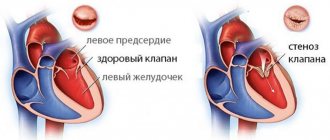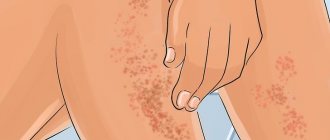What do doctors advise for prevention?
Wash your hands and maintain social distancing. Yes, these rules work not only with Covid-19, but also with seasonal ARVI.
Correct work-sleep-rest regime. Are you getting enough sleep, are you not overtired, and are you not under too much stress? This means you are less likely to get sick.
When we are indoors with other people, we are more likely to be exposed to germs. Organize comfortable temperature conditions, constantly ventilate the room and monitor the operation of the batteries.
People who exercise regularly have a lower risk of contracting a viral infection because physical activity strengthens the immune system. Even a small but regular load will do.
Cold
Cold
Angina
Herpes
5610 25 January
IMPORTANT!
The information in this section cannot be used for self-diagnosis and self-treatment.
In case of pain or other exacerbation of the disease, diagnostic tests should be prescribed only by the attending physician. To make a diagnosis and properly prescribe treatment, you should contact your doctor. Colds: causes, symptoms, diagnosis and treatment methods.
Definition
The term "cold" is not a medical term, but it is so commonly used that it requires more careful consideration. Usually, when talking about a cold, the patient associates his illness with hypothermia, especially since the peak incidence occurs in the cold season. However, hypothermia is only a trigger, a cause of weakened immunity and the development of the disease. Against the background of physical stress, a bacterial or viral infection is observed.
Penetration of viruses and bacteria into the human body
Colds can be caused by both viruses (and in these cases we talk about ARVI) and bacteria.
The combined effect of these microorganisms is also possible, when, against the background of weakened immunity due to a viral infection, active reproduction of the bacterial flora begins.
Causes of colds
The basis of colds is always a decrease in immune status, or more precisely, a lack of immune defense cells at the site of accumulation of pathogenic microorganisms. This occurs due to vasospasm under the influence of cold and poor circulation. Blood cells responsible for capturing and destroying microorganisms do not reach the mucous membrane, where opportunistic microorganisms are always present and where viruses penetrate first. As a result, their active reproduction begins, causing human disease.
Often there is a combined infection, when a violation of the barrier function of the mucous membranes due to a viral disease leads to the proliferation of opportunistic bacteria, which always live there in small quantities.
In addition, hypothermia, which the body perceives as stress, leads to activation of the herpes virus. This virus is found in almost all adults, however, provided they have good immunity, it “freezes” in the nerve cells and does not manifest itself. When the immune system is weakened under the influence of various stress factors (including cold), the virus is activated and moves along the nerve pathways to the surface of the skin, causing rashes on the lips, nose, etc.
Classification of diseases
Colds can be divided into viral (acute rhinosinusitis - inflammation of the mucous membrane of the nose and paranasal sinuses, herpetic infection) and bacterial (acute bacterial rhinosinusitis, acute rhinopharyngitis - inflammation of the mucous membrane of the nose and tonsils; sore throat, which is also called pharyngitis). Acute viral respiratory diseases can be caused by influenza or parainfluenza viruses, as well as adeno-, rhino- and coronaviruses.
The development of viral infections is promoted not only by hypothermia, but also by staying in close groups (schools, kindergartens, public transport), and age (children, elderly people).
Acute respiratory bacterial infections are caused by opportunistic pneumotropic microorganisms that often colonize mucous membranes, but do not develop in large quantities due to immune defense. Among them, streptococci, staphylococci, chlamydia and mycoplasma predominate, the carriage (normal presence in a healthy body) of which varies from 5% (mycoplasma) to 90% (staphylococcus). Acute respiratory bacterial infections, as a rule, are accompanied by less pronounced symptoms of intoxication, and the temperature usually does not exceed 38°C.
In the case of a bacterial infection joining a viral one, the acute form of the disease with a predominance of catarrhal phenomena is replaced by a chronic one, which can last a long time, leading to the development of complications.
Symptoms of a cold
Acute viral respiratory diseases caused by rhino-, corona- or adenoviruses, as well as influenza and parainfluenza viruses always manifest themselves with a sudden and sharp onset, deterioration of the general condition (fever, symptoms of intoxication, heaviness in the head, aching joints, muscle pain, nasal congestion, soreness and redness of the throat without the formation of plaque and films.
Cough during viral infections appears in 20% of cases and is acute, but benign. It disappears within 10–14 days, but sometimes it can last longer – up to 2–3 weeks, in these cases it is called post-infectious.
A dry and unproductive cough during ARVI is caused either by inflammatory changes in the mucous membrane of the upper respiratory tract, or by its irritation due to secretions flowing from the nasopharynx.
Colds caused by a bacterial infection tend to develop more slowly. It may not be accompanied by high fever and significant intoxication.
With a sore throat, not only redness of the mucous membrane is noted, but also plaque, the color and consistency of which depends on the bacterial agent.
Discharge from the nose acquires a greenish tint and a viscous consistency. When coughing, viscous sputum appears. Symptoms of inflammation caused by a bacterial infection may not only appear in the respiratory tract. Migrating through the circulatory system, bacteria are able to infect the heart, joints, kidneys and other organs with the development of corresponding symptoms.
Diagnosis of a cold
Questioning the patient (onset of the disease and symptoms) and examining the mucous membrane of the throat helps determine which infectious agent caused the cold. The presence of plaque, pustules and films speaks in favor of the bacterial nature of the cold. If only a hyperemic and swollen throat is noted, most likely it is a viral disease. Laboratory research methods help clarify the diagnosis and identify the specific causative agent of the cold. A clinical blood test is required to determine ESR and leukocyte formula, and if plaque is present, a smear from the mucous membrane of the pharynx for further microscopy and culture to determine sensitivity to antibiotics.
General recommendations
Rarely does anyone immediately consult a doctor when the first symptoms appear. The first two or three days you can just lie down. But if after four days your health does not begin to improve or worsens, you cannot do without medical help.
If you are convinced that you have ARVI, you can use the following methods to ease the course of the disease:
- drink more (especially if you have a fever);
- refrain from smoking;
- rest (ideally sleep) as long as possible;
- dress comfortably (you can wrap yourself in blankets only if you are cold);
- ventilate the room;
- humidify the air.
Vitamins will also help. In addition to citrus fruits, black currants, sea buckthorn and ginger provide the vitamin C necessary for a cold body. Honey will help strengthen your immune system.
Signs and symptoms of a cold
There are many symptoms of a cold, especially if the cold has affected the entire respiratory (respiratory) tract. A viral disease has its own characteristics, and a bacterial infection has its own. However, common signs do exist, and they are familiar to most people:
- Sore throat and cough are the most noticeable symptoms. The cough can be dry or wet. It is often accompanied by severe pain when swallowing and a sore throat. Depending on which part of the respiratory system was affected, an appropriate diagnosis is made - bronchitis, tracheitis, laryngitis, etc.
- Runny nose and nasal congestion are the second noticeable symptom. Signifies the development of infection - sinusitis, rhinitis. It is difficult to breathe through the nose, mucus is released abundantly and all this creates great discomfort.
- Weakness and headache. A cold always provokes a deterioration in overall health. This is due to intoxication of the body.
- Temperature increase. Almost always, colds are accompanied by a slight increase in temperature and this is normal, as the body fights infection. However, a strong increase, from 38.5 ºC, requires the use of antipyretics2.
Additional measures
Some categories of patients are particularly sensitive to certain drugs. For some they are completely contraindicated. Additional measures must be taken to treat such patients. So, in the first trimester of pregnancy, taking medications is generally undesirable. It is better to use folk remedies. In the last three months you should not drink a lot of liquid. Although this helps to cope with ARVI, the consequences can be serious. Sodium leaching and kidney overload are very dangerous for a pregnant woman.
When treating children under three years of age, essential oils are contraindicated. If they help an adult to recover, in a child, the course of the disease, on the contrary, may become more severe. In addition, the risk of an allergic reaction from an incompletely formed immune system cannot be ruled out.
How to quickly cure ARVI, what to take?
It is easier to harm the body by self-medication than we think.
Especially if, when treating the first symptoms of ARVI, you buy half of the medicines at the pharmacy. The primary task of a person is to help the body, and not to solve problems for it. It is necessary to create conditions under which it will be easier for the immune system to overcome the infection. So how to treat ARVI in adults without harming the body? The first thing to do has nothing to do with medications:
- Bed rest. It is not without reason that when you have a cold, it is customary to stay in bed. This makes it easier for the immune system to cope with the infection; it is not “distracted” by other problems and features of a person’s life.
- Ventilation. As trivial as it may seem, this condition significantly speeds up recovery and also reduces the risk of developing the disease within the family. Viruses can live in the air for up to a week, and ventilation can solve this problem.
- Drink plenty of fluids. Drinking plain water has been found to help with colds. With water, the body removes everything it does not need. Increased sweating is also beneficial, especially in the presence of fever. The best way to achieve this is to drink something warm, such as tea, and wrap yourself in a blanket for 1-2 hours.
- Maintaining a comfortable ambient temperature. Viruses thrive at warm air temperatures of 22-25 ºC. Therefore, the room in which the patient is located is often ventilated. But you shouldn’t lie down under the air conditioner when you’re sick2.
If symptomatic drugs are still needed to alleviate the patient’s condition, or complications develop, then drugs for the treatment of acute respiratory viral infections in adults and children are taken into account:
- A sore throat is treated with sprays, gargling solutions, and a wet cough with expectorants (mucolytics). In rare cases, medications that reduce the intensity of cough are used as prescribed by a doctor.
- If the temperature increases significantly, analgesics or non-steroidal anti-inflammatory drugs (NSAIDs) are prescribed.
- For nasal congestion, vasoconstrictors and rinsing with saline solutions are used. It is very useful to rinse your nose with sea water, for example, Marimer. The product has an innovative soft microspray system and irrigates the entire surface of the mucous membrane. Marimer comes in a variety of forms for the whole family! Produced in France.
- To maintain or enhance the functions of the immune system, immunostimulants come into play.
- In especially severe cases, if a bacterial infection occurs, the doctor may prescribe antibacterial drugs.
Since the main work of recovery is performed by the immune system, pay attention to Imudon® - a local drug in the form of lozenges with mint flavor, primarily aimed at combating diseases of the oral cavity and pharynx3.
The essence of the drug is that it directs the immune system to fight bacteria, activates phagocytosis, and increases the number of cells that participate in the destruction of viruses and bacteria. In addition to treatment, Imudon® can be taken for preventive purposes4.
Is there a cure specifically for colds?
The listed groups of medications have a complex effect on all inflammatory foci. But it wouldn’t hurt to undergo antiviral therapy. For this purpose, the following active ingredients are used:
- interferon (“Grippferon”);
- rimantadine (“Remantadine”);
- tilorone ("Lavomax");
- umifenovir (Arbidol).
It is recommended to consult a doctor before taking them. Colds are easily treated with symptomatic treatment. But if there are no positive changes within a few days (or even get worse), it’s probably not an acute respiratory infection. Flu, sore throat and other illnesses that start out like a cold can have serious consequences. Therefore, if your health worsens, it is important to consult a doctor promptly.
Myths about acute respiratory infections or sore throat
Instructions
More details
1 - Sergeeva I.V. Pathogenesis of acute respiratory viral infections and influenza / I.V. Sergeeva [et al.] // Practical medicine. – 2012. – No. 6 (61). – 47-50 s. 2 - Sergeeva I.V. Immunological aspects of acute respiratory viral infections and influenza / I.V. Sergeeva [et al.] // Siberian Medical Review. – 2012. – 1-16 p. 3 - Instructions for the medical use of the drug Imudon® lozenges from 07/02/2018 4 - Kladova O. V. Clinical effectiveness of Imudon® in patients with tonsillopharyngitis against the background of acute respiratory diseases / O. V. Kladova [et al.] // Children's infections. – 2005. – No. 1. –55–59 c. 5 - Instructions for medical use of the drug Marimer nasal aerosol dated 02/28/2018 The material was developed with the support of Abbott in order to increase patient awareness of their health status. The information in the material is not a substitute for healthcare advice. Contact your doctor. RUIMD191614 from 06.26.2019










